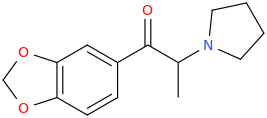Some sloppy-ass reference material they're working with then… I wonder what year you're referencing.
Also, regardless of nomenclature, rinses and recrystallizations alone might not achieve these high purity levels. You mentioned seized LSD that was super-pure, and I had previously mentioned chromatography. LSD is purified via liquid phase chromatography, among other things, so it doesn't surprise me L.E. seized such high-purity contraband. My main point was and still is that it's a bold claim tossing that term "pharmaceutical-grade" out all willy nilly without stepping up the purification techniques.
To me, pharmaceutical-grade means it was produced for the pharmaceutical industry and approved by any relevant overseeing body, but I can see your point, and perhaps my definition is too narrow. After all, purity is purity. Let's ask ChatGPT to see what it thinks…
> What do people mean when they say pharmaceutical purity?
'When people say "pharmaceutical purity," they usually mean that a substance has been manufactured to meet the standards of purity, composition, and potency set by pharmaceutical regulatory agencies. In other words, the substance has been produced in a manner that adheres to strict quality control standards and is considered fit for medical or therapeutic use. The term "pharmaceutical purity" is often used to describe drugs or chemicals that are intended for use in a clinical setting and meet the standards set by regulatory agencies such as the U.S. Food and Drug Administration (FDA) or the European Medicines Agency (EMA). It implies that the substance is of a higher quality and purity than other forms of the same substance that may not meet these standards.'
I don't know though. I think your definition is more accurate from a descriptivist angle, no bullshit. In other words, that's how the term is used regardless of prescriptivist definitions.





